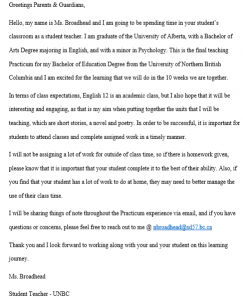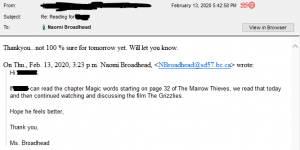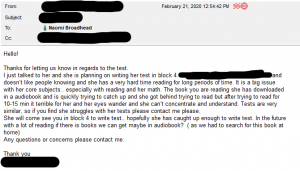Standard 4 – Educators value the involvement and support of parents, guardians, families and communities in schools

Each student within the classroom is unique due to their family structure, no one size fits all in the way that educators work with students and their families. In each of my Practicum situations, I discovered just how much this is true, and while some educators may feel that families are not as involved in students learning as they once were, I think it really depends on how educators invite families to be part of learning. Not all families want to be involved in the same way, but that does not mean that they do not want any involvement. What I noticed was that if the only messages sent to families were ones of concern the conversation often quickly dried up, but if open communication was started early on, it made hard conversations conversations easier later on. I found that the first few emails that I sent out did not necessarily get a lot of response, but as families got use to the communication, they became more involved. I even had families and their respective students contacting me to let me know about absences, sickness etc and to submit assignments or request homework. Not everything done in the classroom can be replicated alone at home, but the interaction proved that families are engaged and want their students to be successful just like their educators do.


One day I had made arrangements to work one-on-one during T-block with a student from one of my classes. They were struggling with the content and as such had decided simply not to do work. I had reached out via phone and email to the family and a game of telephone tag had ensued. While I was sitting with the student in the library, their parent walked in as apparently the student had told their parent that we would be working together in T-block, and while the library might not have been the most ideal place for meeting this parent, at the same time the less formal structure of the space made for a much more open and honest discussion to quietly take place. At the end of the conversation, there was a plan in place for how parents and educators could help the student to stay on track, and also how the student could take control of their learning.
Parent teacher interview night during my final Practicum, provided another opportunity to get to know families and students a little bit better. Families came out and asked important questions about learning taking place in the classroom, they asked about areas that they were unsure of and expressed interest in what their students were learning. Some of the questions that they asked gave me ideas as an educator of how to bring in specific content to bridge the gap between high school and after high school.
